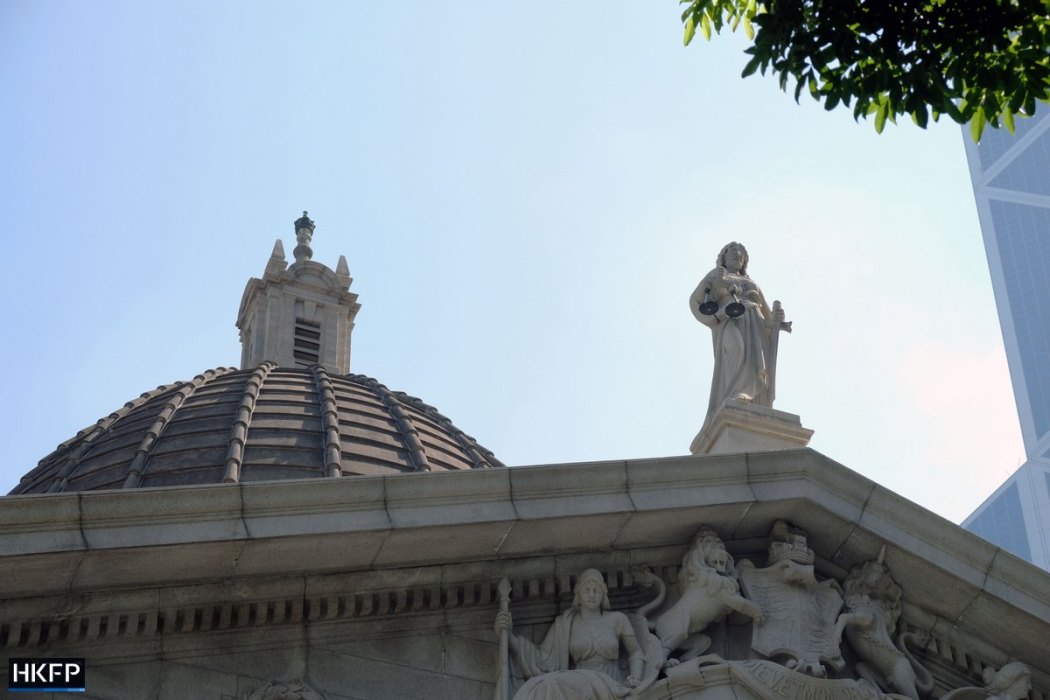Hong Kong’s Court of Final Appeal has overturned the city’s first offensive weapon conviction involving zip ties. In a unanimous decision on Friday, the top court ruled in favour of a bid to challenge the interpretation of the city’s legislation against possession of “instruments fit for unlawful purposes.”
The challenge was filed by real estate agent Chan Chun-kit, who was convicted in 2020 of possession of an offensive weapon with intent. He was sentenced to five and a half months in jail after he was found carrying 48 six-inch zip ties in Causeway Bay, near a rally held by candidates running in the District Council election in Victoria Park. Chan’s sentence was also overturned by the court on Friday.

The Court of Final Appeal was asked to answer four questions with regards to the interpretation of Section 17 of the Summary Offences Ordinance, which states:
“Any person who has in his possession any wrist restraint or other instrument or article manufactured for the purpose of physically restraining a person, any handcuffs or thumbcuffs, any offensive weapon, or any crowbar, picklock, skeleton-key or other instrument fit for unlawful purposes, with intent to use the same for any unlawful purpose, shall be liable to a fine at level 2 or to imprisonment for 2 years.”
Four questions answered by the Court of Final Appeal – click to read:
- On the true construction of the Chinese and English texts of section 17 of the Summary Offences Ordinance (Cap 228), whether the expression “other instrument fit for unlawful purposes” in that section is subject to the ejusdem generis [“of the same kind or class”] rule?
- If the answer to Question 1 is in the affirmative, whether the expression “unlawful purposes” is confined to purposes similar to those crowbars, picklocks and skeleton-keys are fit for?
- On the true construction of the Chinese and English texts of section 17 of the Summary Offences Ordinance (Cap 228), whether the expression “with intent to use the same for any unlawful purpose” in that section is subject to the ejusdem generis rule?
- If the answer to Question 3 is in the affirmative, whether the expression “any unlawful purpose” is confined to unlawful purposes similar to those the instruments or objects referred to in section 17 are fit for?”
Chief Justice Andrew Cheung, Permanent Judges Roberto Ribeiro, Joseph Fok, and Johnson Lam, and Overseas Non-Permanent Judge Anthony Murray Gleeson heard submissions from Chan’s representative, barrister Steven Kwan, and Anthony Chau, who represented the government, at a hearing last month.
Narrower interpretation applies
The phrase “other instrument fit for unlawful purposes” refer specifically to tools “fit for gaining unlawful access,” instead of instruments fit for any illegal purposes, the Court of Final Appeal ruled in the judgement released on Friday.
The court also ruled that, if there were no restrictions to the interpretation of the phrase, there would have been “no need to spell out any specific articles or instruments in the section,” rendering them “redundant.”

If the wider interpretation applied, it would mean that “almost all articles or instruments can be considered as fit for some unlawful purposes,” the top court ruled.
“In other words, under this construction, section 17 is in reality a thought crime, depending on what a defendant’s intent was at the material time (subject to proof). There is simply no warrant to suggest that this was the legislative intent,” the judgement read.
The zip ties in question “were simply not manufactured for the purpose of physically restraining person,” the court ruled, nor were the tip ties offensive weapons or instruments for gaining unlawful access, and thus the six-inch long zip ties fell outside section 17.
The Chinese text
During the appeal, Chau argued that the court should look at the Chinese version of the section as it gave clarity as to “how to reflect the legislative intent,” when compared to the English version.
The court decision on Friday rejected the government’s argument, saying that the Chinese translation of the English original text “cannot affect the correct interpretation of the section,” and that the Chinese translation did not “faithfully” follow the English text.
Support HKFP | Policies & Ethics | Error/typo? | Contact Us | Newsletter | Transparency & Annual Report | Apps
Help safeguard press freedom & keep HKFP free for all readers by supporting our team

LATEST FROM HKFP
HKFP has an impartial stance, transparent funding, and balanced coverage guided by an Ethics Code and Corrections Policy.
Support press freedom & help us surpass 1,000 monthly Patrons: 100% independent, governed by an ethics code & not-for-profit.










